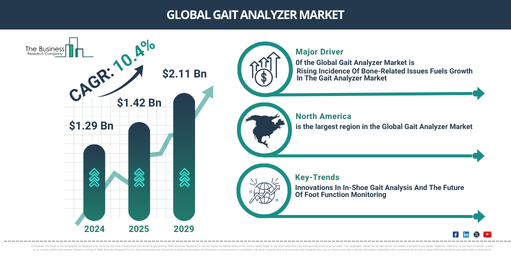Understand How The Anti-Snoring Devices Market Is Poised To Grow Through 2024-2033
The Business Research Company’s global market reports are now updated with the latest market sizing information for the year 2024 and forecasted to 2033
As per The Business Research Company’s Anti-Snoring Devices Global Market Report 2024, the anti-snoring devices market is expected to show significant growth in the forecast period.
Current Market Landscape and Growth Projections
- The anti-snoring devices market has experienced robust growth, reaching $1.67 billion in 2023.
- Expected growth to $1.82 billion in 2024 with a CAGR of 9.0%.
- Historic growth driven by increased awareness of sleep disorders and health risks associated with snoring.
- Forecasted growth to $2.61 billion in 2028 with a CAGR of 9.3%.
- Key drivers include rising focus on sleep health and lifestyle-related factors.
Rise in Obesity Propelling Market Growth
- The increasing prevalence of obesity is expected to drive the growth of the anti-snoring devices market.
- Obesity poses health risks and contributes to snoring, making anti-snoring devices crucial for managing sleep apnea.
- World Obesity Federation projects over one billion obese adults by 2030.
- Major players include Sleeping Well LLC, Apnea Sciences Corporation, and Somnomed Ltd.
View More On The Anti-Snoring Devices Market Report 2024 – https://www.thebusinessresearchcompany.com/report/anti-snoring-devices-global-market-report
Innovations Redefining Anti-Snoring Strategies
- Product innovation emerges as a key trend in the anti-snoring devices market.
- Companies innovate to sustain market position and improve patient outcomes.
- Signifier Medical Technologies introduces eXciteOSA daytime therapy for mild obstructive sleep apnea.
- Kronos Advanced Technologies enhances sleep innovation with Zyppah acquisition.
Market Segmentation and Dynamics
- Segmentation includes product types like Mandibular Advancement Devices (MADs) and Tongue Retaining Devices (TRD).
- Surgical procedures encompass Uvulopalatopharyngoplasty (UP3) and Laser-Assisted Uvula Palatoplasty (LAUP).
- Gender and age groups are considered, targeting men, women, and different age demographics.
- End users span hospitals, community healthcare, sleep clinics, and home healthcare.
Regional Dynamics and Growth Outlook
- North America leads the anti-snoring devices market, with Asia-Pacific anticipated as the fastest-growing region.
- Asia-Pacific’s rapid growth reflects increasing awareness and lifestyle changes.
- Major companies focus on expanding their presence and adapting to regional needs.
Conclusion: Enhancing Sleep Quality with Innovative Solutions
The anti-snoring devices market continues to evolve rapidly, driven by increasing awareness of sleep disorders and technological advancements. Rising obesity rates underscore the importance of effective anti-snoring solutions, while product innovations redefine treatment strategies.
Strategic partnerships and acquisitions enable companies to stay ahead in the competitive landscape, while segmentation ensures tailored solutions for diverse demographics. Regional dynamics highlight the global nature of sleep health initiatives, with Asia-Pacific emerging as a key growth market.
By embracing innovation and collaboration, the anti-snoring devices market strives to enhance sleep quality and improve patient outcomes worldwide. As companies invest in research and development, personalized solutions and improved accessibility will drive market expansion, addressing the evolving needs of individuals seeking effective snoring management solutions.
Request A Sample Of The Global Anti-Snoring Devices Market Report 2024:
https://www.thebusinessresearchcompany.com/sample_request?id=10755&type=smp



